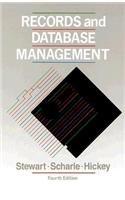Question
1. Suppose we have a packet switched network in which two stations A and B are always separated by four intermediate nodes/switches, i.e., the two
1. Suppose we have a packet switched network in which two stations A and B are always separated by four intermediate nodes/switches, i.e., the two are 5 hops apart. Suppose station A wishes to transmit 1 MB(1024 x 1024 bytes) of data to station B using N packets. Suppose that the networking protocol requires the use of a fixed length 64 byte header per packet. Suppose that switching times are negligible and that the hop time between nodes is entirely determined by the data rate of 100 kbps. Calculate the optimal number N of packets that should be used in order to transfer the entire 1 MB data set in the least amount of time. Hint: Use figure 9.13 from the textbook (also in the slides) to help you visualize this problem. Also, you dont need the data rate of 100 kbps to solve this problem.
2. A cellular system system uses FDMA with a spectrum allocation of 12.5 MHz in each direction, a guard band at the edge of the allocated spectrum of 10 kHz, and a channel bandwidth of 30 kHz. What is the number of available channels?
Step by Step Solution
There are 3 Steps involved in it
Step: 1

Get Instant Access to Expert-Tailored Solutions
See step-by-step solutions with expert insights and AI powered tools for academic success
Step: 2

Step: 3

Ace Your Homework with AI
Get the answers you need in no time with our AI-driven, step-by-step assistance
Get Started


